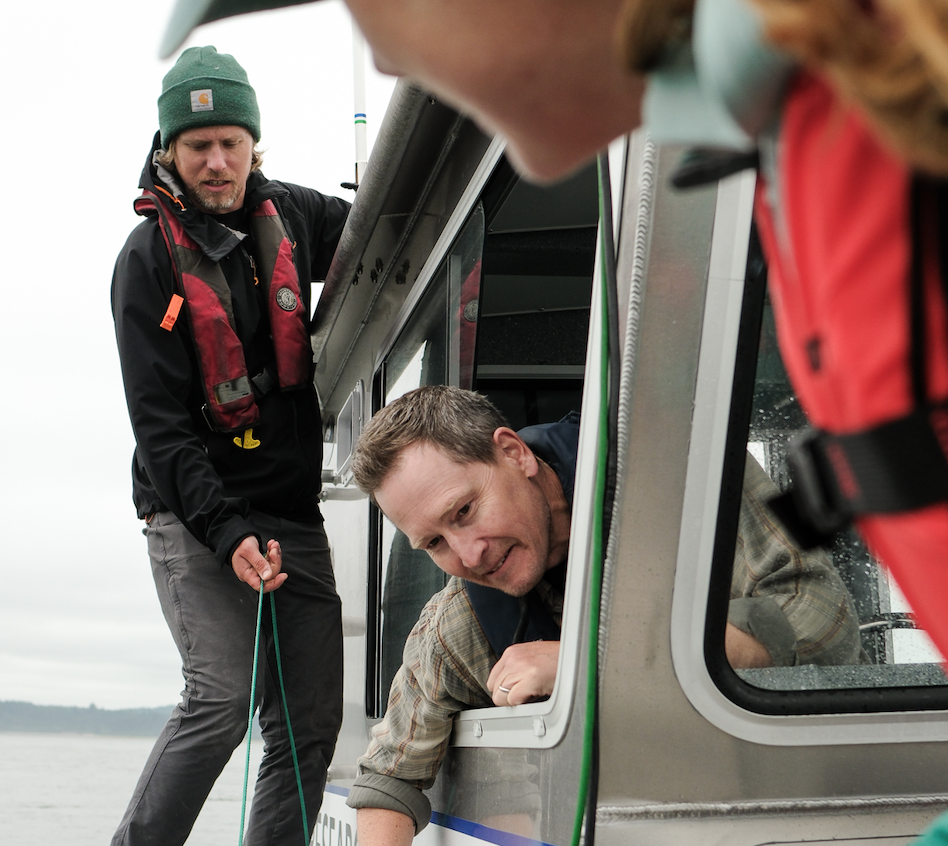Coast Chronicles: The Miraculous Human Hand and Its Amazing Opposable Thumb
Published 4:00 pm Monday, February 1, 2010
I figure that Wayne Ivy must have made about a nickel an hour on the rocker stool I bought at his show at Adelaide’s last weekend.
The diminutive beauty stands seven inches high, is a foot and a half wide, and as solid as a tractor. It’s made of white oak, weighs a good eight pounds, has eight combo mortise and tenon joints and was fumed to a brown-sugar glow.
This piece of handmade craftsman-style Americana went for the amazing price of $50.
It would have been a bargain at thrice the price.
Wayne’s HandsBut what is even more astonishing than selling such a priceless work of art are Wayne’s hands.
Ivy said he didn’t much like the photo of his hands in last week’s newspaper – Mulinix caught them in action planing a piece of white oak.
It’s true that they are hands that have seen some glorious days of work – they’re spotted and tough and bend to the planer.
Wayne’s own joints have been on the job too – that “power grip” he’s got is a classic.
They may not look like much to Wayne, but those hands, made brilliant by two opposable thumbs, are some of the most phenomenal inventions on the planet.
Clovis Points Human hands and tools have always gone together.
The Stone Age lasted from about 2.5 million years ago until the end of the Pleistocene around 10,000 B.C.
For these two million plus years, the highest human technology, except for language, were napped stone tools used for hunting.
The most common is a classic shape, slightly pointed at the top and broadening to a width comfortably held by the hand with sharp scalloped edges.
In North America our best example of this tool is the Clovis point, named after the site where they were first found in 1929 in New Mexico.
On May 27, 1987, on Grant Road in an apple orchard near East Wenatchee abutting the Columbia River, some of the most remarkable Clovis points were discovered.
While installing an irrigation sprinkler system, orchard workers Moises Aguirre and Mark Mickles uncovered nine 12,000-year-old Clovis points buried about 20 inches under the ground.
(I suppose it would be like a couple of municipal workers in 15010 finding an iPod in an ancient septic tank from the “Information Age” – or whatever the 21st century will be called then.)
The find was phenomenal – one of the points, at over nine inches, is still the largest on record and is made of a beautiful, milky obsidian.
(To see photos online check out: http://tinyurl.com/ydn3p3d)
But my point is that for two million years, we homo sapiens used our hands to nap stone tools.
What was changing was not so much the stones as the hands doing the work.
The Amazing Opposable Thumb
We know that we share 99 percent of the same genetic material as chimpanzees.
Although Lance Lewman, NOVA narrator for “What Darwin Never Knew” says, “One percent may not sound like much, but it’s still some 30 million of DNA chemical letters As, Ts, Cs and Gs.”
And, as we’ll see, that leaves a lot of territory for difference.
One thing we do share with the chimps is an opposable thumb, which ends up being a very – you’ll excuse the expression – handy appendage.
An opposable thumb basically means the thumb can touch the ends of all the fingers.
There are two identified grips made possible by this arrangement.
The power grip is when the thumb exerts counter pressure to whatever the fingers, or fingers and palm, are holding – like a wood plane, for instance, a baseball bat or a chin-up bar.
The precision grip is the fingertips and thumb pressing against each other, as when we write with a pen, hold a needle for sewing, or pick up a piece of paper.
Opposable thumbs are shared by many primates and simians; even possums have opposable thumbs, on their rear feet only. A couple dinosaurs are even thought to have had opposable thumbs as well as a genus of frogs native to South Africa.
In fact – this is what is so thrilling about genetics and evolution – all mammals seem to have the potential for hands and maybe even opposable thumbs.
Even a whale’s front flippers have all the bones of a land creature’s arm, including the fingers.
So many creatures have opposable thumbs – and others the potential for opposable thumbs – but ours is just plain better.
Human Evolution and the Hand Our hands and thumbs, though similar to those of the chimps – are shaped differently in significant ways.
Chimp fingers are longer and slender; their thumbs are very short, and when chimps fold their fingers down onto their palms, they form a flat line at 90 degrees to the wrist.
Human fingers are shorter but our thumbs are longer than chimp thumbs and much more muscular.
When we fold our fingers into our palms, they angle down from the index finger to the little finger. (Give it a try and you’ll see what I mean.)
This angle allows the fingers to cover more of the palm and, combined with the strength of our thumbs, gives us the potential for a more powerful grip.
How did this adaptation develop?
It all hinges on that fascinating balance between nature and nurture; that is – the interplay between what genetic designs are present and how they interact with the environment.
It seems irrefutable to me that the shape of the human hand changed over those two million years of chipping stone tools, that natural selection was at work perfecting the potential present in our genes.
Genetic Magic On the nature side of the equation, our genes were being tweaked in magical ways too.
“What Darwin Never Knew” includes a fascinating segment on the human hand and its possible origins in the basic DNA of the mammal.
Scientists are such crazy creatures. One fellow featured in the show, Neil Shubin, has been excavating above the Arctic Circle for years trying to find a very particular fossil.
Creatures with legs first appeared 365 million years ago – before that there were only fish.
So Shubin figured he’d just go look for a fossil that was 365 million years old and see if he could find the original fish ancestor for all mammals – one that might have the beginnings of little nubbin hands and feet.
And by gosh if he didn’t actually find one.
His team named their new fossil find Tiktaalik, an Inuit word for a freshwater fish.
Tiktaalik is a fish that has the same bone structure seen in the arms and legs of every four-limbed animal – one big bone at the top and two bones underneath, leading to a cluster of bones in the wrist and ankle.
The supposition is that Tiktaalik crawled up on land to get away from predators – 365 million years ago there were big sharky fish 15 feet long in the sea – and found it good.
And the supposition is that all land creatures, over vast durations of time, have evolved from this adventurous fish.
Sea and Land and Sea Embryos of all creatures – even humans – at one point in their development have small slits below their heads. In us, these slits become tiny bones in the inner ear, but in fish they become gills.
So, once upon a time, a fish came onto land and eventually developed a bone structure that evolved into our miraculous hands and opposable thumbs.
Then some of those land mammals ventured back into the sea – like those whales with the remnant insipient bone structure of hands inside their fins – and didn’t need hands anymore.
I know we’ve wandered a far piece from Wayne’s incredible hands and his modest, “I guess it’s a gift I have, that my hands do what I tell them to do.”
But those hands and the miracle of the human body is the tiniest part of a long tale told by the earth and the sea.
Stay tuned next week – we’re still tracking the human DNA responsible for the hands that made this beautiful oak rocker stool beneath my feet.









